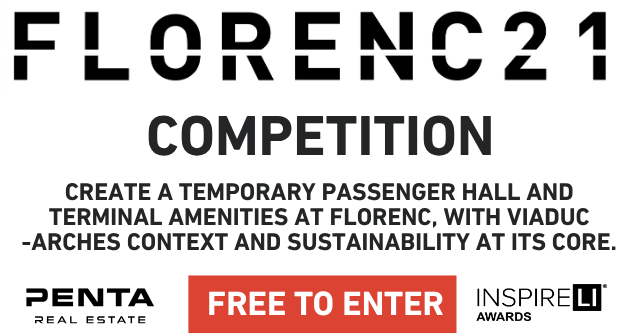Habitat Aeon
Idea projektu
Začal jsem výzkumem podmínek na Marsu - teploty, atmosféry, dostupnosti vody, zdrojů energie a toho, co lidé potřebují k přežití. Poté jsem se zaměřil na návrh a funkčnost obytného modulu, který by lidem umožnil žít na Marsu ihned po příletu. Mezi klíčové aspekty patřila nízká hmotnost pro přepravu a snadná montáž. Modul musel poskytovat kyslík, vodu, energii, prostor pro pěstování potravin a ochranu před radiací. Jednotlivé části jsem navrhoval na základě skutečných vědeckých technologií s cílem vytvořit řešení vhodné pro první lidskou kolonii na Marsu. Cílem bylo vytvořit funkční, soběstačné obydlí pro první posádku. Navržené moduly zohledňují drsné podmínky planety - nízké teploty, řídkou atmosféru a potřebu nezávislosti v produkci energie a potravin. Jejich tvar, uspořádání a vybavení umožňují dlouhodobé bydlení, práci, pěstování potravin a bezpečný provoz. Projekt vychází z technických principů, ale zahrnuje také představivost a vizi budoucnosti, kdy by Mars mohl být dalším krokem lidstva ve vesmíru. Nejde jen o stavbu modulů, ale o představu skutečného života mimo Zemi.
Popis projektu
Dvoupatrový obytný modul pro 4 osoby Tento 8 metrů široký modul je rozdělen na dvě patra a uspořádán do funkčních sekcí. Obsahuje průchozí místnost s kuchyní, koupelnu a kombinovanou ložnici a pracovní prostor. Díky šestiúhelníkovému tvaru má každá část jasný účel a prostor je efektivně rozdělen bez nevyužitých ploch. Modul působí otevřeně a příjemně, zejména díky integrovaným větracím šachtám, které zajišťují neustálou cirkulaci a regulaci vzduchu. Nabízí dostatek úložného prostoru. Na míru navržené schodiště je kompaktní a bezpečné, umožňuje častý a snadný pohyb mezi patry, aniž by zabíralo zbytečně mnoho místa. Celý interiér je navržen s důrazem na praktičnost, pohodlí a soběstačnost, což umožňuje dlouhodobé bydlení a práci. Hlavní obytný modul - centrum základny Tato šestiboká, 15 metrů široká dvoupodlažní stavba slouží jako centrální prostor pro bydlení, práci a koordinaci celé základny. Je přibližně dvakrát větší než standardní skládací moduly a má tři vchody: hlavní s přechodovou komorou a dva spojovací průchody do obytných modulů, které umožňují členům posádky pohybovat se mezi jednotlivými částmi základny, aniž by museli vycházet ven. Přízemí je rozděleno do šesti funkčních zón. Uprostřed je vyvýšená plošina s hlavním stolem, židlemi a počítači, která slouží jako velitelské a komunikační centrum. Poblíž hlavního vchodu je skříň pro skafandry a technické vybavení. Dále je zde otevřená kuchyně s barovým pultem, obývací a jídelní část, pracovní prostor s kancelářskými stoly a dvě technické místnosti - jedna s toaletou a druhá s umývárnou. Do horního patra, kde se nachází hlavní skleník, vede kompaktní schodiště. Ten využívá hydroponický systém a umělé osvětlení k pěstování čerstvých plodin. Vedle něj se nachází malá kuchyňka, která může fungovat i jako laboratoř, a pracovní prostor se stoly pro výzkum a plánování misí. Celý modul spojuje obytnou, pracovní, technickou a zemědělskou funkci do jednoho logicky uspořádaného celku. Díky propojení s ostatními moduly umožňuje bezpečný a pohodlný pohyb po celé základně - stává se tak srdcem a ústředním centrem života na Marsu.
Technické informace
Model je navržen tak, aby se po příjezdu automaticky rozložil. Jeho šestiúhelníkový tvar umožňuje efektivní využití prostoru a snadné spojení s dalšími moduly bez nevyužitých mezer. Konstrukce je vyrobena z lehkých a pevných uhlíkových vláken a průhledné fólie ETFE, která je pružná, odolná proti UV záření a mrazu a extrémně lehká. Jádro modulu je vytištěno 3D tiskem, aby byla zajištěna jeho trvanlivost a udržitelnost. Mezi vnější a vnitřní vrstvou je tepelná izolace, která chrání před zamrznutím i přehřátím. Cílem bylo vytvořit uzavřený, soběstačný systém. Modul reguluje teplotu, tlak a kyslík, recykluje vodu, nakládá s odpadem a vyrábí energii. Vše je kompaktní, odolné a přizpůsobené marťanským podmínkám. Interiér lze rozdělit na symetrické zóny - obytnou, technickou, zemědělskou nebo hygienickou - s přístupem do středu i ke stěnám. Díky svému univerzálnímu tvaru může modul fungovat jako obytný prostor, laboratoř, skladovací jednotka nebo spojovací chodba. Modul je vybaven solárními panely, které zajišťují energetickou soběstačnost. V případě nouze nebo nedostatku slunečního světla lze využít záložní zdroje energie umístěné v nejnižší části modulu. Ty zahrnují baterie a systémy, které udržují základní funkce.


